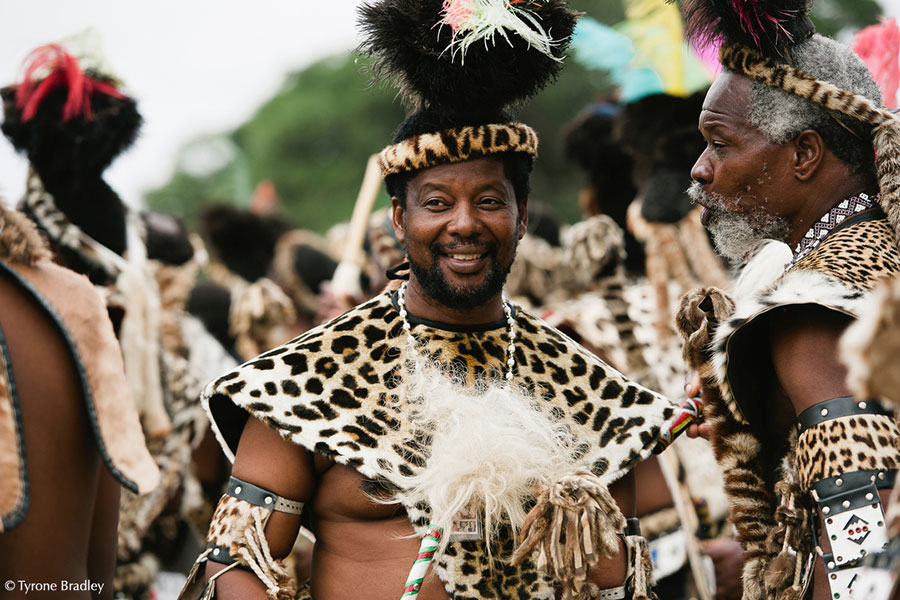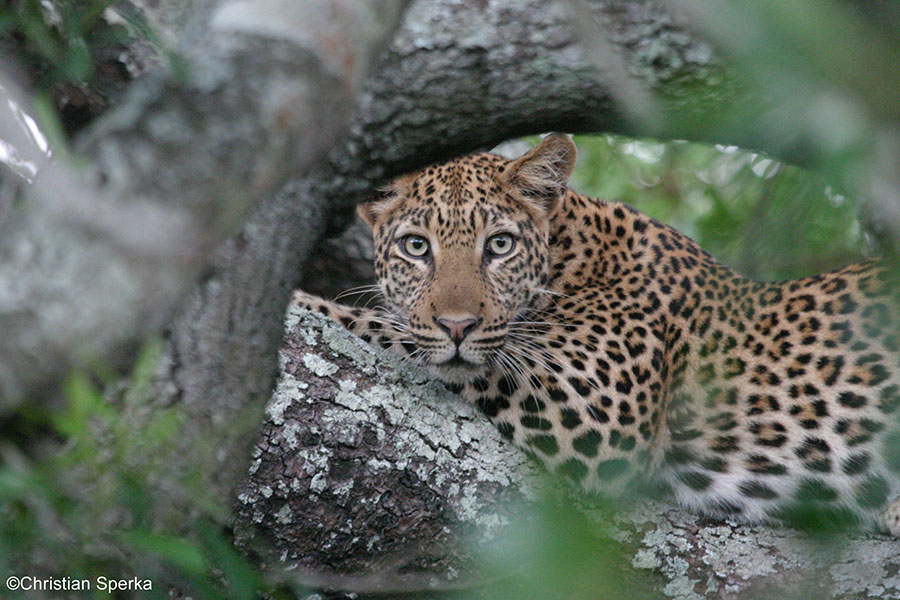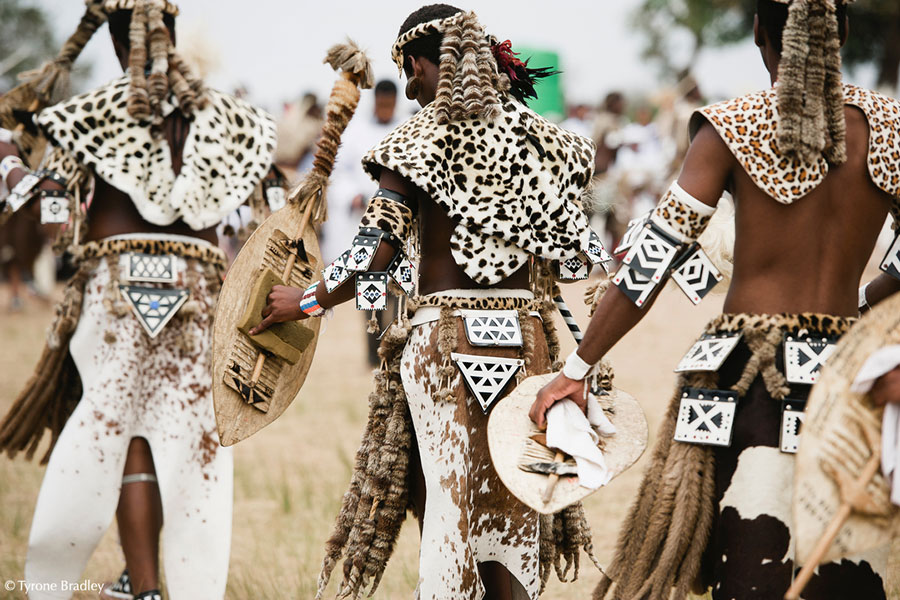- An innovative conservation idea – replace real leopard skins with realistic fakes.
- It now takes $30 to save a leopards life and saves traditional community members up to $700.
- Panthera’s business model offers an alternative to the “no” messages of mainstream conservation.
- Getting buy-in from influential leaders, brands and celebrities can help further a cause.
“Fake it until you make it,” is a phrase you’re more likely to hear from an upwardly mobile millennial than a South African Shembe Church member. But if you venture to the eastern regions of this country that is exactly the type of comment you might hear from a man wearing a leopard skin cape. And he’s not Kanye West either.
In southern Africa, leopard skins are coveted by members of the Nazareth Baptist ‘Shembe’ Church who wear the furs during religious celebrations and ceremonies. Unfortunately, thousands of the world’s most persecuted big cats – the leopard (often mistakenly called the panther) must die to supply these skins. Panthera, a wild cat conservation organization has come up with an innovative solution to save these indigenous leopards and offer an alternative to a demand that shows no signs of slowing down.
The solution? Fake leopard skins.
Shania Twain has just been named a Leopard Ambassador for Panthera and is proudly sporting her fake spots at every opportunity. “We want to capitalize on the fact that people everywhere are wearing more leopard print than ever, but so few know what’s actually happening to them in the wild,” says Twain.
While many consider fakes a scourge and detrimental to the bottom lines of popular fashion brands, Panthera has embraced it wholeheartedly by establishing the Furs for Life Leopard Project, a global wild cat conservation organization that has partnered with luxury brand Cartier and the Peace Parks Foundation to protect and revive southern Africa’s leopard populations. Fake leopard skins, made in China, are donated to Shembe community members, who are delighted at the realistic manufacturing – almost indistinguishable from the real thing.
The sophisticated equipment needed to create the fake skins was not available in South Africa and the team needed to look abroad. In an ironic twist, a country known best for exporting fake goods and importing endangered wildlife products, ended up providing a solution that protects the African leopard.

Panthera Leopard Program director, Guy Balme, reckons there are around 20,000 illegal leopard skins in circulation in Southern Africa and Panthera decided they needed to introduce a similar quantity into local communities by the close of 2017 to create meaningful impact. “The species has vanished from nearly 40 percent of its habitat in Africa and over 50 percent in Asia,” explains Balme. And it’s their beauty that is partly responsible. While leopards are also in jeopardy from loss of habitat and conflict with people, the demand for their skins is one of the main causes of their decline.
“We decided to collaborate with digital designers and clothing companies to create a high-quality, durable and realistic fake leopard fur cape, known as an amambatha,” says Balme. A real leopard skin can cost up to $700 while the fake Panthera alternative costs $30. They are now collaborating with church leaders to encourage their members to use these sustainable fake capes at religious ceremonies and to date, more than 7,000 fakes have been donated to members throughout South Africa.
It hasn’t been without its problems. “The first batch from China arrived with red leopard spots because the manufacturer ran out of black ink,” says Balme. “Amazingly, this batch has become quite coveted among the Shembe, who wear the skins as if it’s a limited edition fashion rage,” he says. “The original idea came from observing how poorer Shembe members used goat skins with painted spots as a substitute,” says Balme. “We knew that a more authentic looking replica would easily be adopted.”
The fakes look and feel like real leopard skin and last longer (they are even machine washable). However, the already established value of real leopard skin was a problem from the start. “Panthera originally hoped to sell the fake skins at cost to the church leadership, assuming they would mark it up with a small margin and sell it on to their congregation,” says Balme. On a visit to one of the gatherings Balme was shocked to discover that the $30 furs were being sold for up to $200. Predictably, the stock was not moving very fast. The alliance with Cartier and The Peace Parks Foundation, an initiative to create wildlife conservation areas that ignore political borders, has now allowed thousands of furs to be distributed for free. At $30 per leopard saved it’s a steal.

“It’s very rare in conservation to have a business solution such as this,” explains Balme. “We usually have to appeal to peoples’ conscience or compete for dollars with dozens of other conservation efforts around the world.” Balme attributes most wildlife conservation problems to food security and overpopulation and knows that economic solutions for local communities will ultimately win the battle. Evoking sympathy and tears for a dead leopard will not.
A global operation to save endangered wild cats needs people on the ground in the affected areas and the organization has developed a network of specialists – all with the vision of conserving big cats for future generations. A leadership team of eight works with six Species Directors, who in turn work with nearly 50 field staff across the world.

Panthera is the brainchild of founder Thomas Kaplan, who has had a fascination with wild cats and their conservation since childhood. His single-minded pursuit is to identify all the key hurdles facing cat conservation globally and find solutions for them. It’s no small task and he’s fond of quoting American broadcast journalist Edward R. Murrow: “Difficulty is the one excuse which history does not accept.” Last year Kaplan arranged the signing of the Global Alliance for Wild Cats. Along with his wife, Daphne, he signed a pledge that saw each member give $20 million to Panthera. The high profile members, have created a unique coalition of Gulf Arabs, Chinese, Indians and Americans that have united in a common cause to change the face of cat conservation forever.
A social media and fundraising campaign, #ifakeit, is raising global awareness around the plight of leopards and Panthera have set their sights on countries, such as India, Nepal and Zambia – where a similar cultural demand exists for leopard skin. Their business model is an easy one to scale because it’s based on the swapping out of an existing product, rather than on the outlawing and denying of something.
The leader of the predominantly Zulu party in South Africa, Mangosuthu Buthelezi, has been convinced of the merits of the program and has pledged his support, along with other dignitaries. While some Shembe are likely to continue their traditional ceremonies as they have for the past hundred years, unfazed by the authenticity of their outfits, many others have thankfully realized that by “faking it” they’re helping bring the leopard back from the edge of extinction.




































